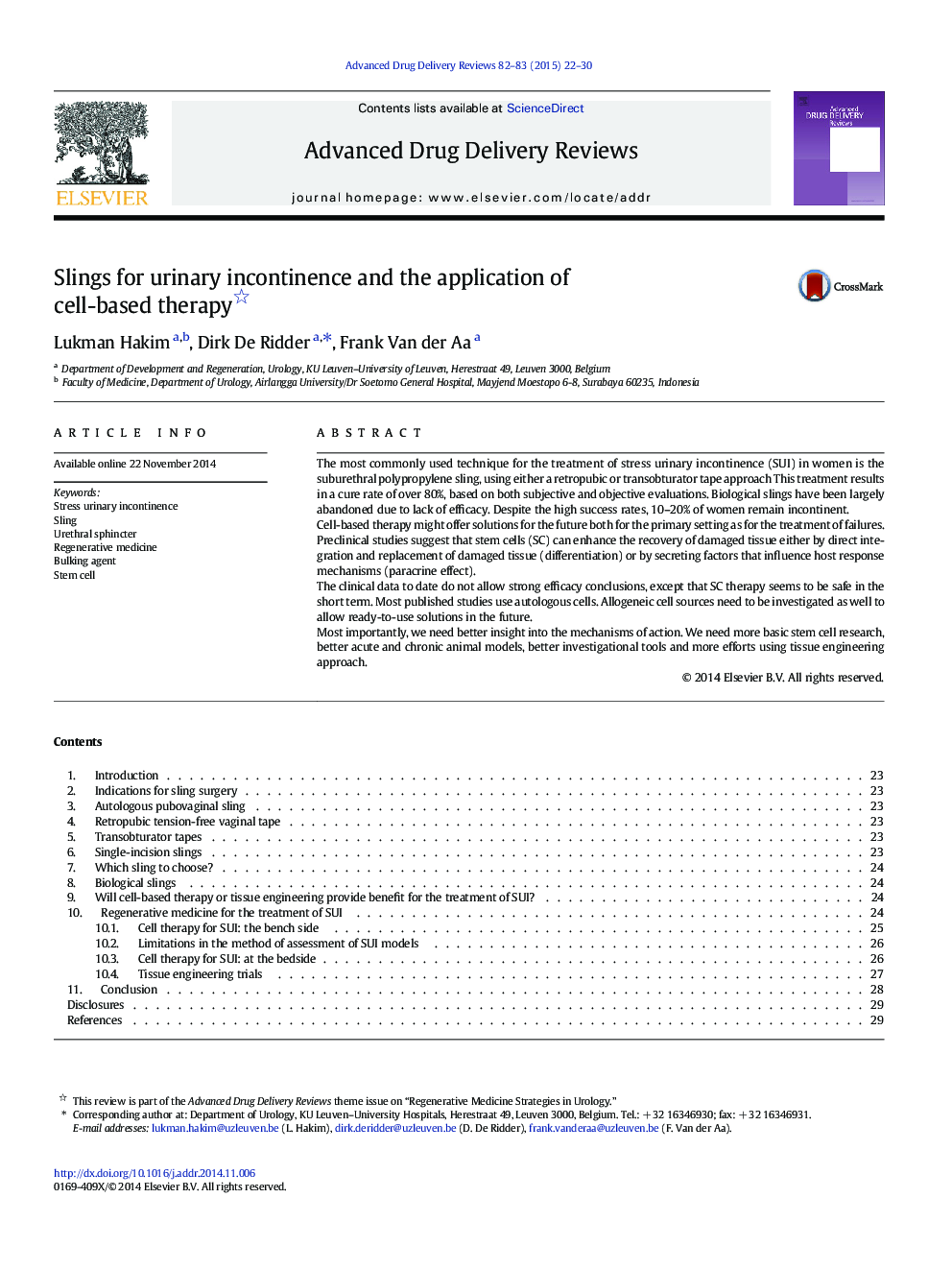| کد مقاله | کد نشریه | سال انتشار | مقاله انگلیسی | نسخه تمام متن |
|---|---|---|---|---|
| 2070768 | 1544581 | 2015 | 9 صفحه PDF | دانلود رایگان |
The most commonly used technique for the treatment of stress urinary incontinence (SUI) in women is the suburethral polypropylene sling, using either a retropubic or transobturator tape approach This treatment results in a cure rate of over 80%, based on both subjective and objective evaluations. Biological slings have been largely abandoned due to lack of efficacy. Despite the high success rates, 10–20% of women remain incontinent.Cell-based therapy might offer solutions for the future both for the primary setting as for the treatment of failures.Preclinical studies suggest that stem cells (SC) can enhance the recovery of damaged tissue either by direct integration and replacement of damaged tissue (differentiation) or by secreting factors that influence host response mechanisms (paracrine effect).The clinical data to date do not allow strong efficacy conclusions, except that SC therapy seems to be safe in the short term. Most published studies use autologous cells. Allogeneic cell sources need to be investigated as well to allow ready-to-use solutions in the future.Most importantly, we need better insight into the mechanisms of action. We need more basic stem cell research, better acute and chronic animal models, better investigational tools and more efforts using tissue engineering approach.
Figure optionsDownload high-quality image (170 K)Download as PowerPoint slide
Journal: Advanced Drug Delivery Reviews - Volumes 82–83, March 2015, Pages 22–30
